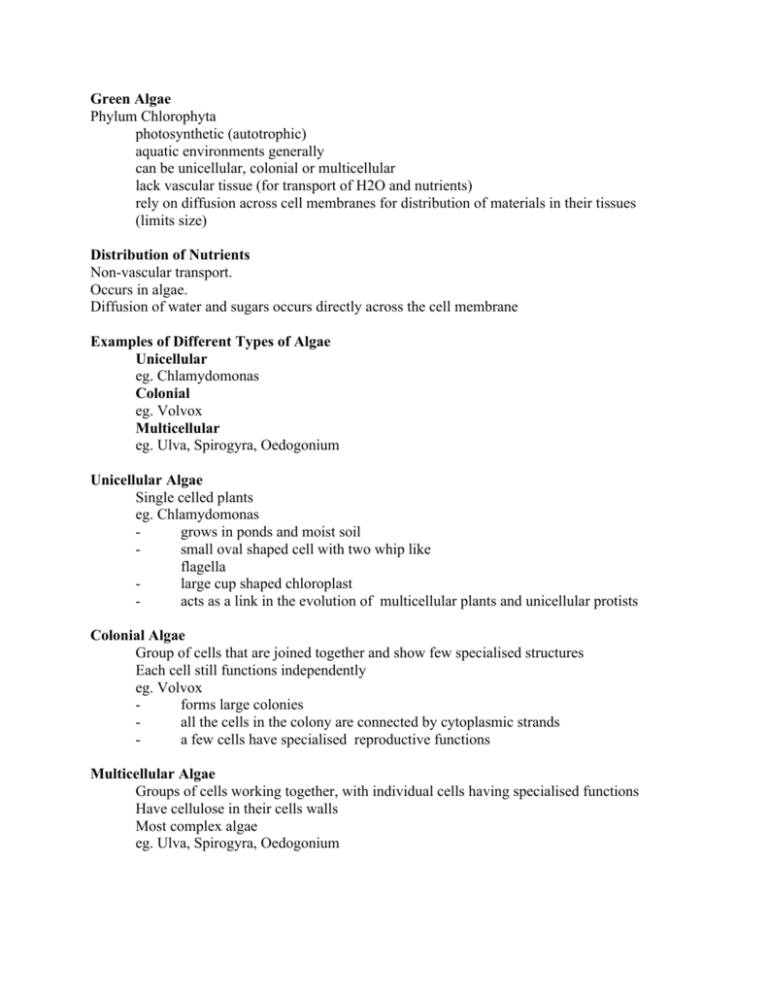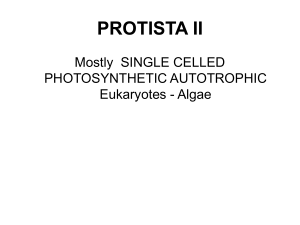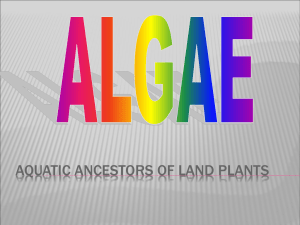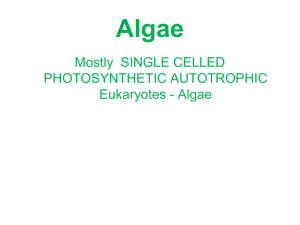Green Algae Phylum Chlorophyta photosynthetic (autotrophic
advertisement

Green Algae Phylum Chlorophyta photosynthetic (autotrophic) aquatic environments generally can be unicellular, colonial or multicellular lack vascular tissue (for transport of H2O and nutrients) rely on diffusion across cell membranes for distribution of materials in their tissues (limits size) Distribution of Nutrients Non-vascular transport. Occurs in algae. Diffusion of water and sugars occurs directly across the cell membrane Examples of Different Types of Algae Unicellular eg. Chlamydomonas Colonial eg. Volvox Multicellular eg. Ulva, Spirogyra, Oedogonium Unicellular Algae Single celled plants eg. Chlamydomonas grows in ponds and moist soil small oval shaped cell with two whip like flagella large cup shaped chloroplast acts as a link in the evolution of multicellular plants and unicellular protists Colonial Algae Group of cells that are joined together and show few specialised structures Each cell still functions independently eg. Volvox forms large colonies all the cells in the colony are connected by cytoplasmic strands a few cells have specialised reproductive functions Multicellular Algae Groups of cells working together, with individual cells having specialised functions Have cellulose in their cells walls Most complex algae eg. Ulva, Spirogyra, Oedogonium Structures lack stems, leaves and roots (terms reserved for vascular plants) ● HOLDFAST: anchoring device ● BLADES: leaf-like structures ● STIPES: stem-like structures Adaptations aquatic plants do not require some of the specialized structures for life on land ● no vascular tissue: water bathes plant in nutrients and carbon dioxide, plant relies on diffusion ● no support: plants float in water, no need for true stem (sometimes have floats) ● do not dry out: leaves can be thin and unprotected ● reproduction: motile reproductive cells swim through water ● large surface area to increase photosynthetic surface Chlorophyll Chlorophyll ● the light absorbing pigment for photosynthesis ● requires specific wavelengths of light ● seawater absorbs red and violet Chlorophyll Adaptations: ● algae have evolved to deal with the lack of red and violet light 1. different forms of chlorophyll which absorb different wavelengths of light à examples: green algae (chlorophyll a and b), red algae (chlorophyll a and d), brown algae (chlorophyll a and c) 1. Accessory Pigments: absorb different wavelengths of light and pass energy on to photosynthetic machinery ** these 2 adaptations allow algae to survive in deeper water











